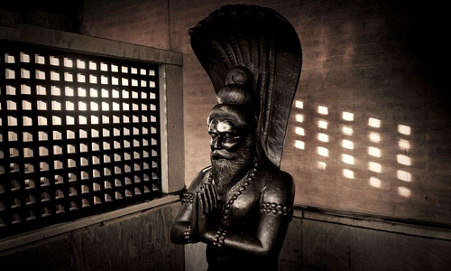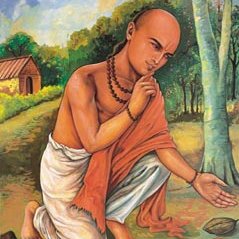
The Great Indian Sages..
Pippalada was an ancient Indian Vedic sage, philosopher, and a teacher of the Atharvaveda. He established his own school of Atharvaveda known as the "Pippalada-sakha".
Pippalada is the master of the Prasna Upanishad, one among the ten Mukhya Upanishads
Pippalada was an ancient Indian Vedic sage, philosopher, and a teacher of the Atharvaveda. He established his own school of Atharvaveda known as the "Pippalada-sakha".
Pippalada is the master of the Prasna Upanishad, one among the ten Mukhya Upanishads

Upanishads are one of the primary Hindu texts.
The word ‘Upnishda’ has been derived from the root Sad (to sit), Upa (nearness) and Ni (totality). Thus, this word means ‘sitting near by devotedly’
The word ‘Upnishda’ has been derived from the root Sad (to sit), Upa (nearness) and Ni (totality). Thus, this word means ‘sitting near by devotedly’
Coming to Prashna Upanishad which contains six Prashna (questions), and discussion on their respective answers.
The 6 questions are the deepest questions of life and remain as vital as thousands of years ago.
The 6 questions are the deepest questions of life and remain as vital as thousands of years ago.
The questions..
1. From what source or place are living beings born?
2. How many devas (powers) uphold a living being?
3. From where does life come into body? How does it abide & go out of body? How does life interface with external world? How is it connected with the Self?
1. From what source or place are living beings born?
2. How many devas (powers) uphold a living being?
3. From where does life come into body? How does it abide & go out of body? How does life interface with external world? How is it connected with the Self?
4. What powers are inactive & awake when one sleeps? Who sees the dreams? Who experiences happiness?
5. If one were to meditate on the symbol “Om” until death, what would they obtain?
6. Who is the person with sixteen parts? (different modes of the Self)
5. If one were to meditate on the symbol “Om” until death, what would they obtain?
6. Who is the person with sixteen parts? (different modes of the Self)
Pipplada is also know to provide The Garbha Upanishad, a text almost exclusively on medical and physiology, and the theory of the formation and development of the human embryo and human body after birth.
It has 5 stanzas and stanzas narrating in detail about conception and gradual growth of a child in the mother's womb: formation of semen, fertilization, sex determination, blastula and gastrula stages, embryonic disc,...
, formation of head, legs, foot, wrist, stomach, hip, waist, spine, mouth, nose, eyes, ears, brain, congenital anomalies, twinning, starting of life and intelligence.
Also narrated is the physical condition of child's body & its mental state at each stage of the development in the womb.
How embryo remembers the past life karmas and when reaches birth canal and is touched by an all-pervading movement [Māyā] forgets previous births and karmas.
How embryo remembers the past life karmas and when reaches birth canal and is touched by an all-pervading movement [Māyā] forgets previous births and karmas.
The details are astonishing:
- When ready, on the joining [of male and female], [the embryo] after [a day] and night is in a mixed (semi-fluid) state; after seven days becomes a bubble; after a fortnight, solid mass, & in a month, it hardens. In two months, it develops the head;
- When ready, on the joining [of male and female], [the embryo] after [a day] and night is in a mixed (semi-fluid) state; after seven days becomes a bubble; after a fortnight, solid mass, & in a month, it hardens. In two months, it develops the head;
- in three months, the feet grow. In the fourth month, belly and hip are formed; in the fifth month, the backbone is formed; in the sixth month, nose, eyes and ears are formed.
- In the seventh month, [the embryo] comes to have the jīva (conscious self), and in the eighth month, it becomes complete in every sense.
It is indeed amazing, that, the great ancient sage, like Pippalda, visualized and narrated the formation, growth, and development of the human and also proposed the etiology behind the formation of the congenital anomalies.
Naman to this great Guru 🙏
Naman to this great Guru 🙏
• • •
Missing some Tweet in this thread? You can try to
force a refresh






